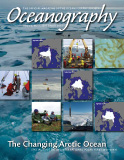First Paragraph
During its formative months, I often faced the question whether this fourth IPY would include “kayaks” (my codeword for small, individual, and implicitly flexible and innovative research projects) or exclusively “icebreakers” (a codeword for large multi-investigator projects, by implication complex planned efforts, generally controlled by the established polar scientific order). The question of project scope arose in Arctic science meetings and penetrated, for a time, the public media. I maintained that innovation and creativity would occur throughout IPY, regardless of size of project or platform. As steward of the IPY International Office, I argued publicly for the widest inclusion of ideas and proposals, from groups large and small.

